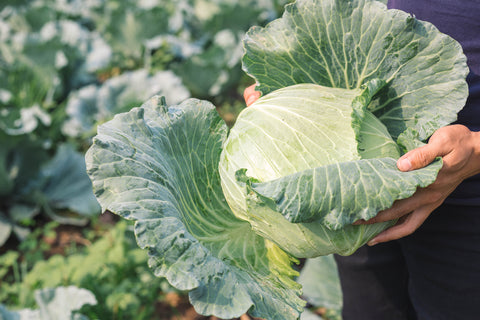Are you considering using pressure treated wood for your garden bed? The choice of horticultural material is crucial, and pressure-treated wood is a popular choice due to its enhanced durability and rot resistance. However, its security and applicability can cause problems.The following content also has some reference value for raised garden beds.

In this article, we will address potential issues, provide insights into best practices, and discuss alternatives. Whether you're an experienced gardener or just starting out, this article will help you make an informed decision while ensuring the vitality of your garden.
First, why use pressure treated wood for your vegetable garden?
Due to its unique advantages, pressure treated wood is a popular choice for gardeners. It has enhanced durability, making it resistant to decay, decay and insect damage. This means your flower beds can last longer without having to worry about frequent replacement.
In addition to durability, pressure-treated wood has low maintenance costs compared to untreated wood. You'll spend less time on maintenance tasks, allowing you to fully enjoy your garden.
While the initial cost may be slightly higher, pressure-treated wood is cost-effective in the long run. Reduced maintenance costs offset the initial investment.
The stability of pressure-treated wood is another significant advantage. It is less prone to bending, twisting or cracking than other wood types, ensuring that your garden bed retains its structural integrity over time.
These compelling benefits make pressure-treated wood an excellent choice for building garden beds. However, many people want to know how to keep treated trees safely in their garden beds, and for good reason.

The big question: Is pressure-treated wood safe?
Unfortunately, it's not a simple "yes" or "no" answer when it comes to the safety of using treated wood as a garden bed. There are several factors at play, and understanding them is crucial:
- Treatment method: The safety of pressure treated wood depends on the specific treatment method used. The older approach involved chemicals such as arsenic, which presented an even greater concern. Modern treatments, such as ACQ or CA-B, use safer preservatives. The selection of wood treated with these new methods can reduce potential risks.
- Usage: Consider the use of garden beds. If you grow inedible plants or decorative flowers, the risk of chemical leaching is reduced. However, if you plan to grow edible plants that come into direct contact with the wood, such as vegetables or herbs, you need to be extra careful. In this case, it is recommended to use a plastic barrier to separate the wood from the soil to minimize the chance of chemical contact.
- Age of wood: age of pressure-treated wood. Older wood, treated with more dangerous chemicals, is more likely to leach toxins. If you are using older wood, you should take extra precautions or consider alternatives.
- Environmental conditions: Environmental factors play a role in the chemical leaching of wood into the soil. Areas with heavy rainfall or acidic soils may experience more severe leaching. Monitoring local conditions and taking appropriate measures can help mitigate potential risks.
All in all, if you use newer, safer wood to grow inedible plants and take proper precautions such as barriers, then yes, it can be a relatively safe option. However, if you are concerned or plan to grow edible plants on old wood without protection, it is best to consider alternative materials to ensure the safety of your organic garden.
If you decide to use wood treatment, how can you stay safe
If you want to use treated wood in your vegetable garden, it is vital that you follow safety best practices:
- Use new pressure treated wood: New pressure treated wood uses fewer harmful chemicals than old wood. When buying, make sure the wood is suitable for residential use.
- Use plastic lining on the bed: If you're using pressure-treated wood to build a raised bed, you can add a thick layer of plastic to the interior wall before filling the bed with soil. This will create a barrier between the wood and the soil, reducing the risk of any chemicals leaching into the soil.
Avoid direct contact: Do not grow vegetables directly next to pressure-treated wood. Leave some space between wood and plants to minimize potential contact. A handy tool to help with this is to use a self-watering planter, which can be placed at a safe distance from the treated wood.
- Regular soil testing: Regularly test garden soil for heavy metals. This will help you keep an eye out for any potential contamination.
- Follow safety guidelines: When handling pressure-treated wood, always wear gloves and a mask to protect your skin and respiratory system.
What is the best alternative to using pressure treated wood garden beds?
If you are concerned about the potential risks of using treated wood in your home garden, there are several options for garden beds, including:

Composite: Composite garden beds are an excellent choice for combining wood aesthetics with modern and more durable technologies.
Untreated wood: Untreated wood, such as cedar, redwood, and oak, are excellent choices for garden beds. These types of wood have natural resistance to rot and pests, which makes them ideal for long-term outdoor use. Cedar and redwood, in particular, contain natural oils and tannins that help them resist weathering and insect attacks.
- Metal: This is a sturdy and durable alternative to garden beds. It is weather-resistant, pest-resistant and does not decay over time. Galvanized steel and aluminum are commonly used. There are prefabricated metal loft beds in various shapes and sizes.
Brick or stone: These materials can also be used to build garden beds. They are very durable and can add a different aesthetic to your garden









